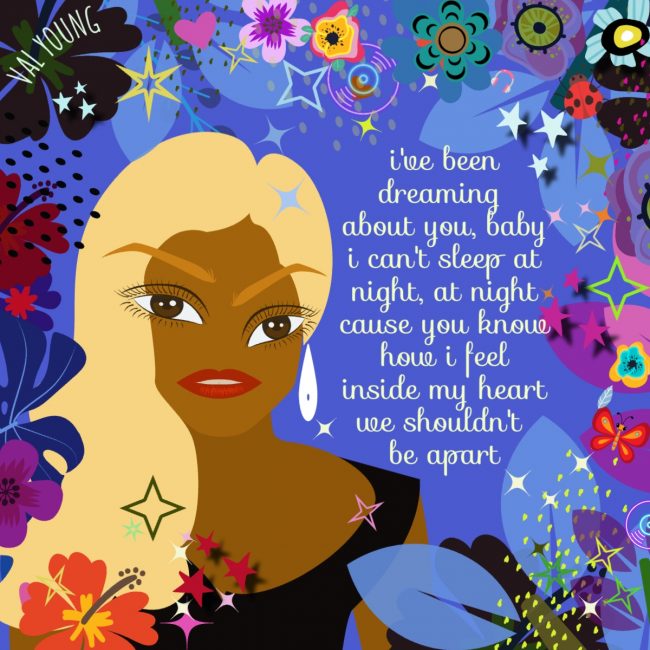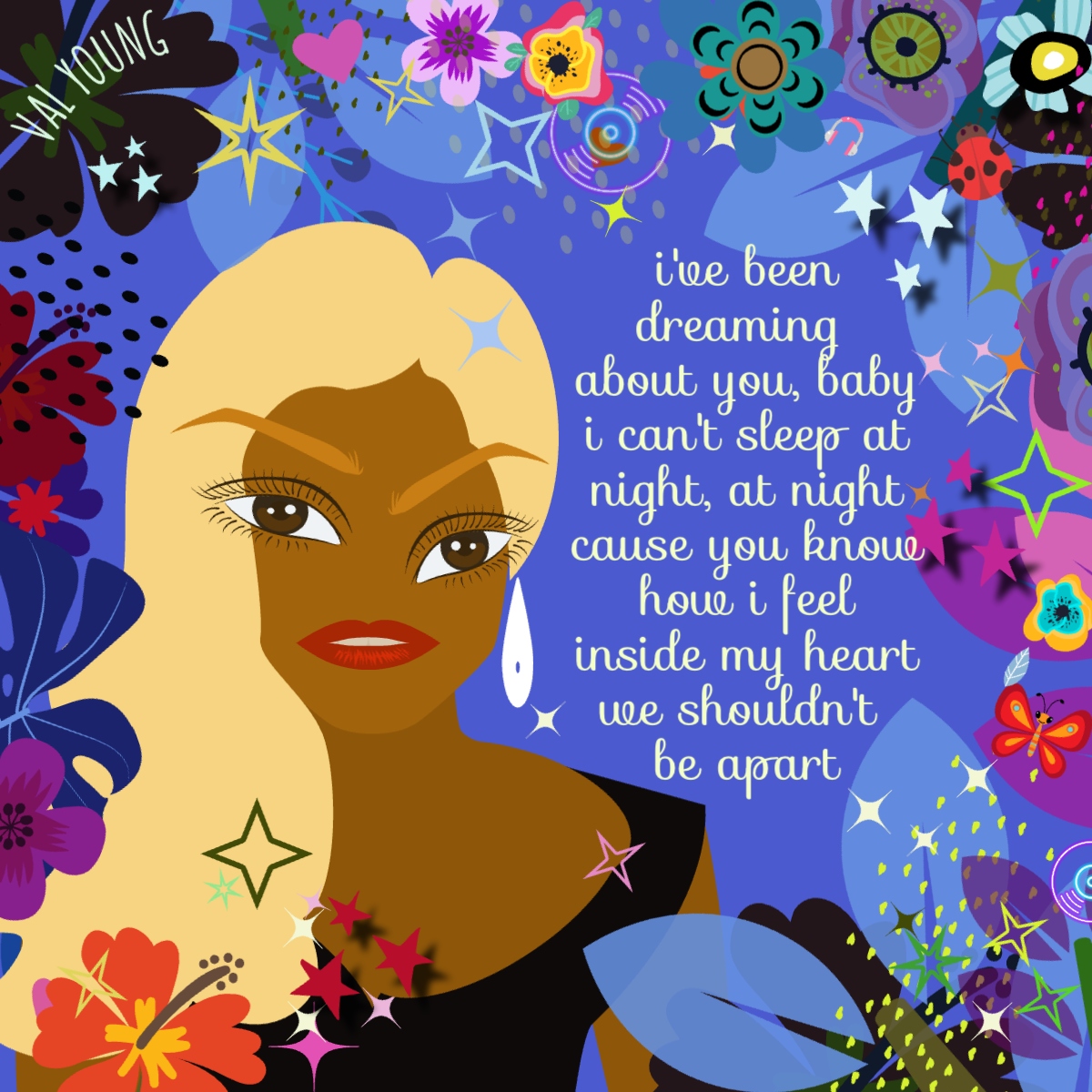“I can get in where I fit in, ” says Val Young. “I love all music.”
R&B/soul singer-songwriter Val Young, also known as “Lady V,” was one of the original Mary Jane Girls Band members.

The Detroit-born former Motown recording artist began singing background vocals for The Gap Band, George Clinton, Teena Marie, El Debarge, Evelyn ‘Champagne’ King, Bobby Womack, and Roy Ayers. Her all-time favorite artist is Gladys Knight. Growing up, she used to listen to her music all of the time.
She began singing with Rick James in 1981 on the Street Songs tour. Teena Maire was the opening act. She was also a member of the original Mary Jane Band.
“What a great, great time I had with RJ (Rick James). Recording, working, touring, personal, everything,” says Val Young. “We could be laughing and talking, and he could create a song. Rick James was the best of everything.” She added, “I learned from Rick to be focused. Rick always told me to be someone that someone else wants to be.”
Rick James produced her debut album, Seduction, which included the hits “Mind Games,” “Piece Of My Heart,” and “If You Should Ever Be Lonely.”
“I always wanted to be solo,” said Val Young in a Truth in Rhythm interview on YouTube. “But I still sung backgrounds on the Mary Jane Girls records.”
Her talent and physical attributes impressed Rick James so much that he promoted her as the “Black Marilyn Monroe.”
Packed with so many great songs, Rick James decided against including Val Youngs’ recording of the song “In My House” on the album. Instead, he gave the song to his fledging girl group, The Mary Jane Girls, who released “In My House,” it became a mega-hit. Regardless, Val Young’s Seduction album achieved gold status.
I would listen to Val Yong’s hits on WDKX in Rochester, New York. After school, I would turn up the radio in the art room when I heard the first bars of “If You Should Ever Be Lonely.” I was such a big Val Young fan that I dragged my brother, Rich, and his friend, Teresa, to see her perform live at a small club in Downtown Rochester. The three of us stuck out like a sore thumb in the club.
I may never understand why I grew up listening to R&B when no one else in my family did, but I can trace my career trajectory back to those early years of listening to Val Young, Rick James, and Luther Vandross nonstop on WDKX.
I was a Luther fan long before I worked for him, so I am passionate about helping promote his legacy. It was one of the most magical, defining moments in my life. I’m grateful to stay in touch with Luther’s musical family, promote his musical legacy, and offer diabetes outreach support to his fans.
After the success of her first album and Rick James’s passing, I didn’t hear much of Val Young. I’m not a rap fan, so I assumed she had left the music industry. But her voice can be heard on hit songs with Dr. Dre, Snoop Dogg, Too Short, Mark Morrison, and Napoleon. Her most successful collaboration is the song “To Live & Die In L.A.” with Tupac Shakur.
You can’t help but fall in love with Val Young listening to her Truth in Rhythm interview. She’s down-to-earth, funny, and very humble about her success. She was genuinely surprised to learn Mariah Carey covered her song, “If Should Ever Be Lonely.” She said, “I was just so happy and truly blessed.”

Most recently, Val Young, Candice Ghant, and Rick James’ daughter, Ty James, have been performing as the new lineup of The Mary Jane Girls at various Rick James tribute shows.
Thank you, Val Young, for being part of the soundtrack of my life. Her music reminds me of the kid who grew up listening to R&B and was lucky enough to work for one of his idols.

Join us for our Luther Vandross: Never Too Much birthday celebration featuring a Music Panel, Fashion Show, Luther Trivia Games, Live Performances, Style Vendors and Live DJ.
Come dressed in your Big 80s Bling!
Luther Vandross was known for wearing rhinestones, silk tuxedos, and tailcoats on stage and Versace, Gucci, Dolce & Gabbana, and Tom Ford off-stage! He wasn’t afraid of bright colors, animal prints, geometric patterns, and fringe. His style and incredible showmanship brought him legions of fans worldwide.
We’re celebrating the Glitz, Glamour, and Romantic Elegance that made his concerts memorable and set him apart from other entertainers.
MUSIC PANEL: Luther’s Vocalist, Cindy Mizelle, Luther’s Choreographer, James Ervin, and Graffiti Glamour Makeup Artistry Founder Alicia Mitchell give us a closer look into the Shine of the Rhinestones, Big Luscious Hairstyles, Bold Makeup, Graceful Moves, and Tight Harmonies comprising Luther’s iconic stage shows. Hosted by Max Szadek.
FASHION SHOW: Designers showcase their gorgeous creations inspired by Luther Vandross’s romantic elegance. See the latest styles from Harlem’s Heaven and Modafleur, among others! Hosted by Catherine Schuller.
LIVE PERFORMANCE: Luther’s most iconic songs performed by Luther’s most iconic songs by vocalist Keith Anthony Fluitt.
STYLISH VENDORS: Shop for apparel, jewelry, and teas from a dazzling array of small entrepreneurs.
COCKTAILS & LITE BITES: Enjoy signature cocktails and delicious appetizers.




























